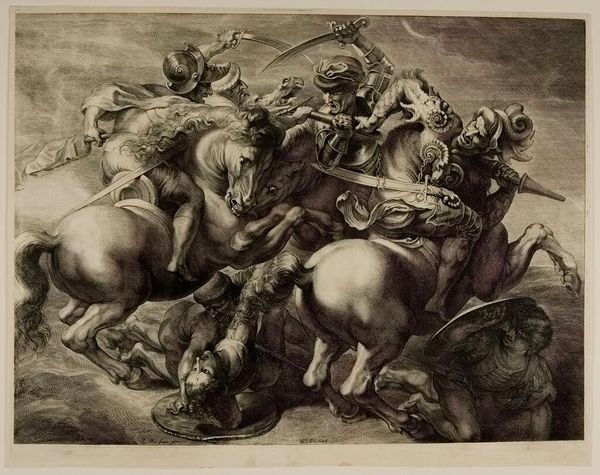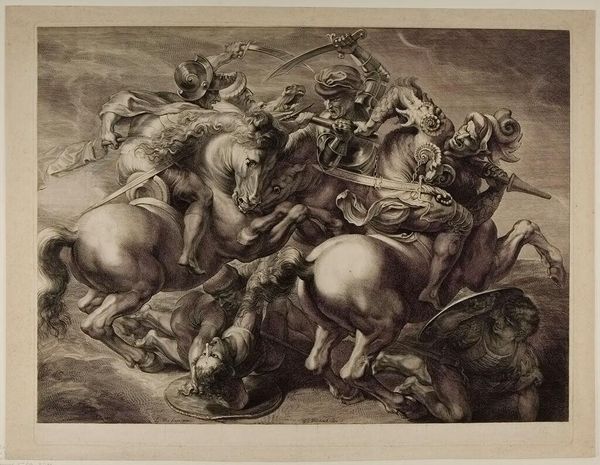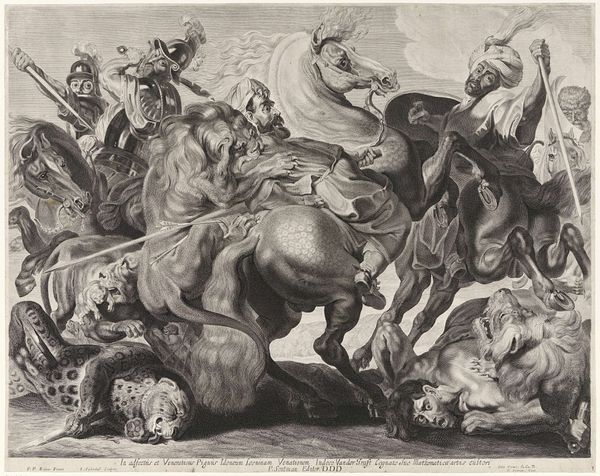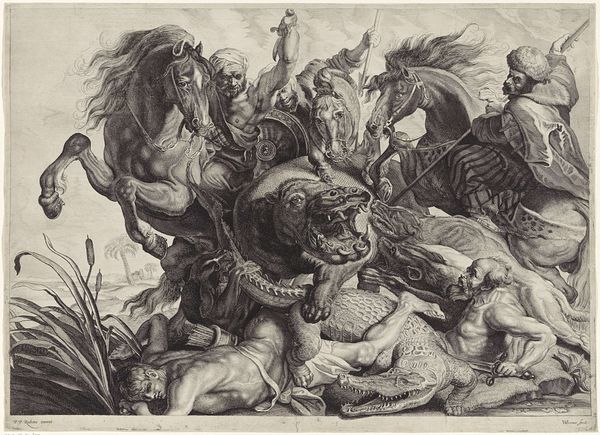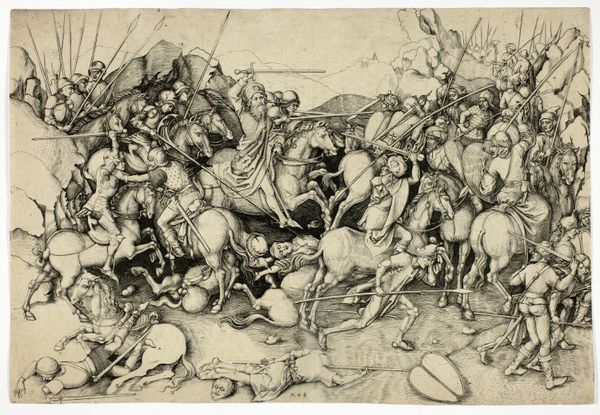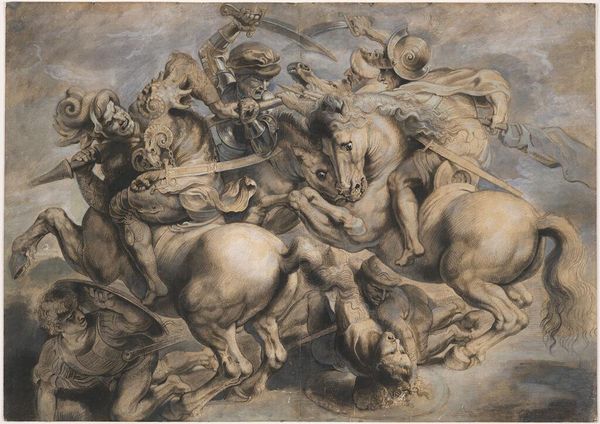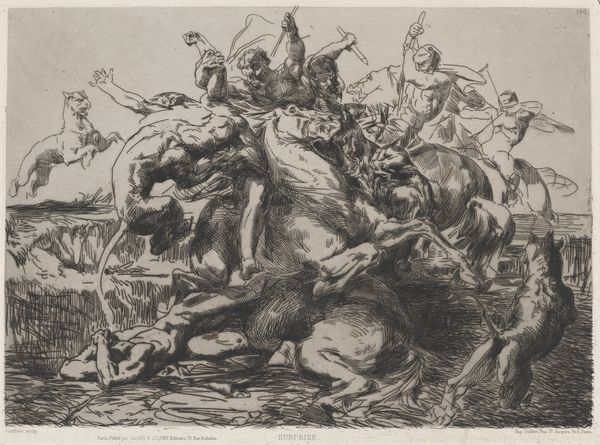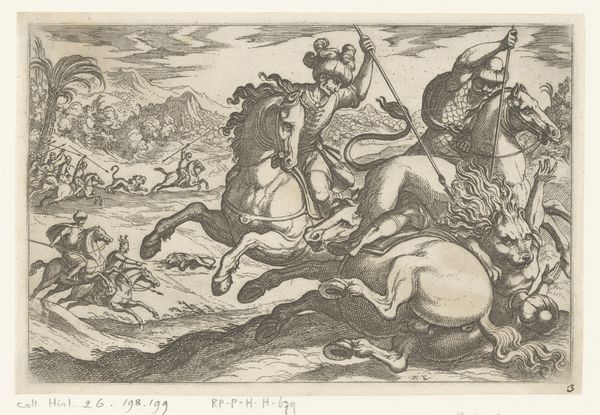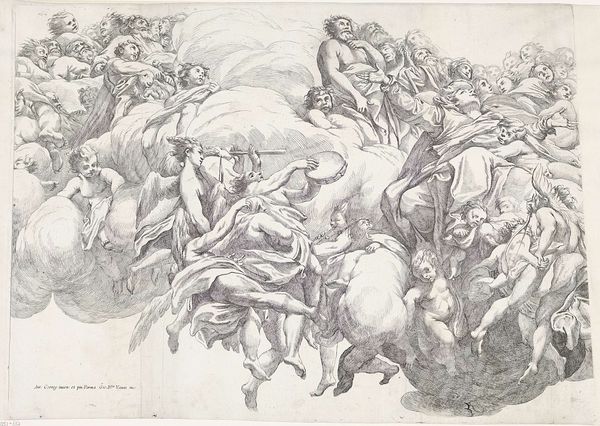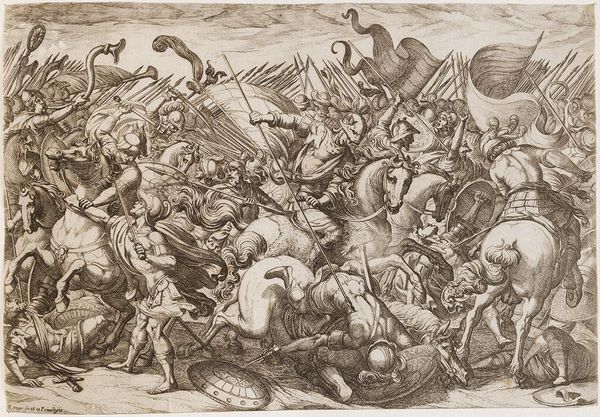
print, engraving
#
baroque
# print
#
landscape
#
figuration
#
line
#
genre-painting
#
history-painting
#
engraving
Dimensions: height 478 mm, width 620 mm
Copyright: Rijks Museum: Open Domain
Editor: So, here we have "Ruitergevecht," or "Cavalry Combat," an engraving by Gérard Edelinck, dating roughly from 1666 to 1707. The energy practically jumps off the page, but the violence also feels… romanticized? What do you see in this piece? Curator: It’s tempting to simply see a chaotic clash, but consider the context. This print isn't just about illustrating a battle. What narratives about power, cultural conflict, and masculinity might Edelinck be reinforcing here? The figures, caught in the frenzy of combat, become symbolic stand-ins. Who are these soldiers and what might this scene be expressing in the wake of near-constant warfare across Europe? Editor: That's interesting. I hadn’t really thought about the "who." The details of the weaponry and costumes almost blur together. Is it trying to communicate a specific event, or something broader? Curator: The specificity is less important than the allegory. Consider how battle, especially during this period, was deeply intertwined with concepts of honour, religion, and national identity. Where do these narratives exclude, marginalize or oppress? Edelinck presents the theatre of war. Think about what that performance represents within a social framework. What values are glorified or challenged in that portrayal? Editor: So, the artist is potentially commenting on how violence is represented, not just depicting the event itself? Almost a critique of the performance of war? Curator: Exactly. By emphasizing the theatricality, Edelinck opens a space to question the motivations and the impact of those performances, making visible their connections to broader power dynamics and systems of belief. Editor: That really changes how I see the image. It’s less about the surface action and more about unpacking what that action represents culturally. Curator: Indeed, and about acknowledging whose stories get told and whose are erased in those representations. It encourages critical engagement with the image itself. Editor: Well, thanks for that perspective, I definitely have some thinking to do.
Comments
No comments
Be the first to comment and join the conversation on the ultimate creative platform.
